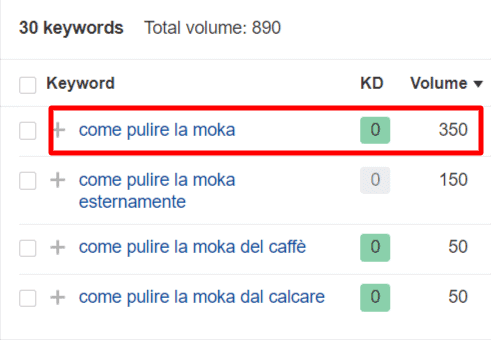First of all, what is important for SEO translations?
The goal of SEO translations is to ensure that the website’s content appears high up in the search engine results in the respective target country. The aim is to generate as much visibility as possible for relevant keywords via organic search.
This brings us to the first of three points that are important for SEO translations:
- Optimizing for the right search engine
In the US, we automatically think of Google when we hear the term “search engine”. However, for SEO translations, it’s important to be aware that Google might not necessarily be the most popular search engine in your target country. For example, in China they use Baidu and in the Czech Republic they use Seznam.
Point 1: determine which search engine you need to optimize the translation for, as they are all based on different algorithms. |
- Using native speakers for translation and quality assurance
Machine translation alone won’t meet your needs. This is because artificial intelligence is unable to understand the cultural idiosyncrasies and semantic nuances – among other aspects – inherent in language. And it is precisely these details that make all the difference in SEO.
Let us give you an example: when you hear the words “espresso maker”, “bialetti” or “moka pot”, a certain image probably comes immediately to mind. Google Translate translates it as follows:

An Italian audience would very quickly be able to tell that this was not translated by a professional. In Italy, the small silver pot is known as “la caffettiera” or “la moka” (it should be noted that regional variants are not included here). No one in Italy would order a “caffè espresso”, since Italians simply call an espresso “caffè”.
When it comes to an SEO translation, opting for the machine-translated version wouldn’t get you very far at all.
Point 2: be sure to have machine translations checked by native speakers. |
- Doing your own keyword research
As the previous point demonstrates, literal translations often use terms that are quite far removed from what native speakers would actually say.
Point 3: conduct keyword research for the target language instead of simply translating your existing keywords. |
Keyword localization is of fundamental importance, since the search terms for which the content is to be optimized need to reflect the language used by the local market.
Let’s move on now and get down to the nitty-gritty: how do you actually go about SEO translations? The following 4 steps are essential:
1. Do keyword research for the target country
2. Strategically place the keywords throughout the content
1. Do keyword research for the target country
The goal of keyword research is to identify relevant search terms and group them into topics. In this case, “relevant” means that:
- your target group is searching for the term, and
- you can serve the intention behind the search query.
Always research the keyword list before you start creating content. Retrospectively optimizing for keywords is a tedious process and often only yields marginal results.
Analyze search results
It’s as simple as it sounds: the first step is to take a look at the search results (SERP, search engine results page). This shows you what the search engine rates as particularly relevant for the search query in question.
Important: don’t forget to choose the right country for the search under “Settings”!
Look at what terms are in the SERPs and where they appear:
- In paid advertisements: which keywords are advertisers spending money on?
- In titles and metadescriptions
- If available, in featured snippets
Here’s an example: for the Italian keyword “come pulire la caffettiera” (how to clean an espresso maker), the top search results look like this:

The featured snippet pictured above shows “la moka” as a synonym for “caffettiera”. But we also see “People also ask” in the section below it. It’s worth considering using the formulations mentioned there in your content, too.
The next step involves taking a closer look at the first 10 search results.
- Which terms appear particularly often?
- How is the content structured?
- In short, how is your strongest competition going about it?
Refining with keyword tool(s)
By now, you will have noted various keywords that are already working very well. However, you still don’t know which phrases are searched for most often.
Keyword tools like Ahrefs, Semrush, KWFinder or (if you’re working with a small budget) Google Keyword Planner can help you uncover them.
In the screenshots below, you’ll see examples from Ahrefs’ Keywords Explorer. These show, for example, that “come pulire la caffettiera” has 100 more search queries per month than the phrase “come pulire la moka”:

Here’s the synonymous keyword for comparison:

It therefore makes more sense to focus on the first variant as the main keyword. The phrase containing “la moka” would be a good secondary keyword.
After carrying out your keyword research, you should have a document in which the relevant search terms are clearly organized. Based on this, you can assess which specific translation of the original keywords makes the most sense.
2. Strategically place the keyword sets throughout the content
Next, it’s a matter of knowing exactly where to place the keywords in your content. In other words, this means that your main keyword should appear in the following places in an SEO translation:
- In the H1 title
- In the first 100 words
- In the closing paragraph
- In the URL
- If possible, in the HTML subheadings
The same best practice rules apply to SEO translations as to the original SEO text.
Overall, the keyword density in the SEO translation should be 0.5–1%.
3. Check for consistency and meaningfulness
In some cases, there may be more than one person working on the SEO translation. This makes it all the more important to ensure consistency. Using your keyword research as a reference document is already a significant step towards this. However, it is also worthwhile creating a glossary to ensure everyone involved can look up how to translate a particular technical term if necessary.
A consistent translation is one thing, the meaning behind it is another. SEO translators should always keep in mind whether the content of the translation in question actually makes sense. Accuracy is only half the battle; after all, website content is part of content marketing, i.e. brand communication. The latter is aimed at specific target groups, which are different in every country.
Here are two examples:
Product texts and brand names
The brand of grooming products known as “Axe” in Europe is called “Lynx” in some English-speaking countries. The name was adapted because “Axe” was deemed too aggressive for English-speaking markets and was already trademarked. The issue is that if a translator isn’t aware that a brand name has been adapted, they might continue using the product name known in the country of the source language – and risk not reaching the target market.
Meaningfulness of the content
You can put as much effort as you like into producing an error-free translation, but if the content goes over the target audience’s heads, was there really any point? Especially when it comes to consulting content, SEO translators have to take a critical look at the translated content and ask themselves: can the audience in the target country actually get something out of this?
Let’s take a blog post by Ahrefs as an example. Translated from English into German, many of the points are perfectly useful to German speakers. But then the following tip appears concerning Help A Reporter Out (HARO), an online feed for journalists (Point 9. Monitor and respond to HARO requests):

The problem here is that HARO is only available to people based in the US, so this tip is pretty useless for people in the DACH region. When translating the text, it would have made more sense
- to omit this point, or
- to mention a suitable alternative.
4. Translate the metadata
It’s important that the title tag and the metadescription are also taken into account in the translation. This is the information that users see first in the search results, like the example below:

The metadata is like the poster child for a website, so make sure that the SEO translation also adapts this part: the main keyword should appear in the title and in the metadescription. It’s a good idea to create a separate document for this purpose, which should include the title and metadescription for both the original and the translation. This will make it easier for you to keep track of which page has which metadata, how many characters the title and description each have, etc.
Bonus tip: change the URL structure
Launching your website in a new country also means that its URL structure needs to be adapted accordingly. Here are a few suggestions for best practice:
- Create different subdirectories for the various languages, i.e example.com/en and example.com/at.
In this way, the entire domain’s pages will benefit when other pages get useful backlinks. This would occur much less frequently if you used separate top-level domains (example.en) or subdomains (en.example.com).
- Don’t forget to translate the URL slugs
This means that example.com/en/laender/italien wouldn’t be a very smart choice; a URL such as example.com/en/countries/italy, on the other hand, would be much better.
- Make sure your hreflang tags are correct
This allows Google to assign the individual translations to each other and rank the right content in the right country. In addition, the tags cause these linked subpages to boost each other. This means, for example, that a direct link to example.com/at/produkt/a can also lead to positive effects for example.com/en/product/a.
Bonus question: is duplicate content an issue in SEO translations?
You may have heard that translations are problematic for SEO, as Google might consider them duplicate content. But there’s no need to worry: as long as the translation is of a high quality and was produced individually, this shouldn’t be a problem.
John Müller from Google confirmed this in May 2021: “Just in general, translated content is unique content.” Unique because the translated page contains completely different words and letters. Negative effects on the ranking would therefore be more likely if the translation leaves something to be desired in terms of quality.
Conclusion: how to succeed with SEO translation
To sum things up, the following points are what make a good SEO translation:
- Thorough research into which search terms the audience in the target country actually uses (keyword localization)
- Strategic keyword placement in the content
- Translated metadata and alt texts (captions) for images
- Checking whether the translation might be misunderstood or incomprehensible in the target country
- Collaborating with native speakers to ensure the quality of the finished translation
And that’s a wrap. We wish you the best of luck with your SEO translations!
Cover image via Twenty20
